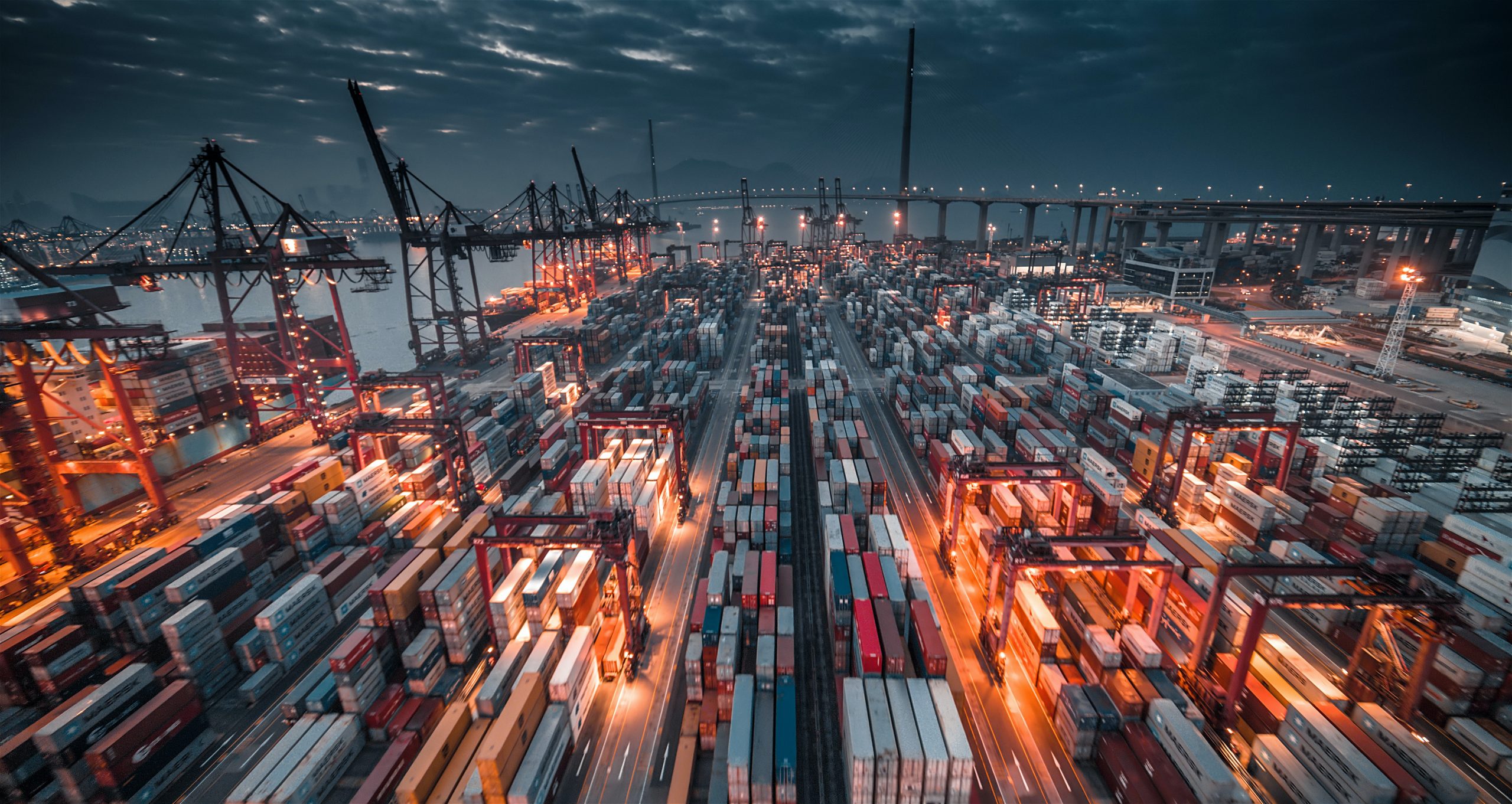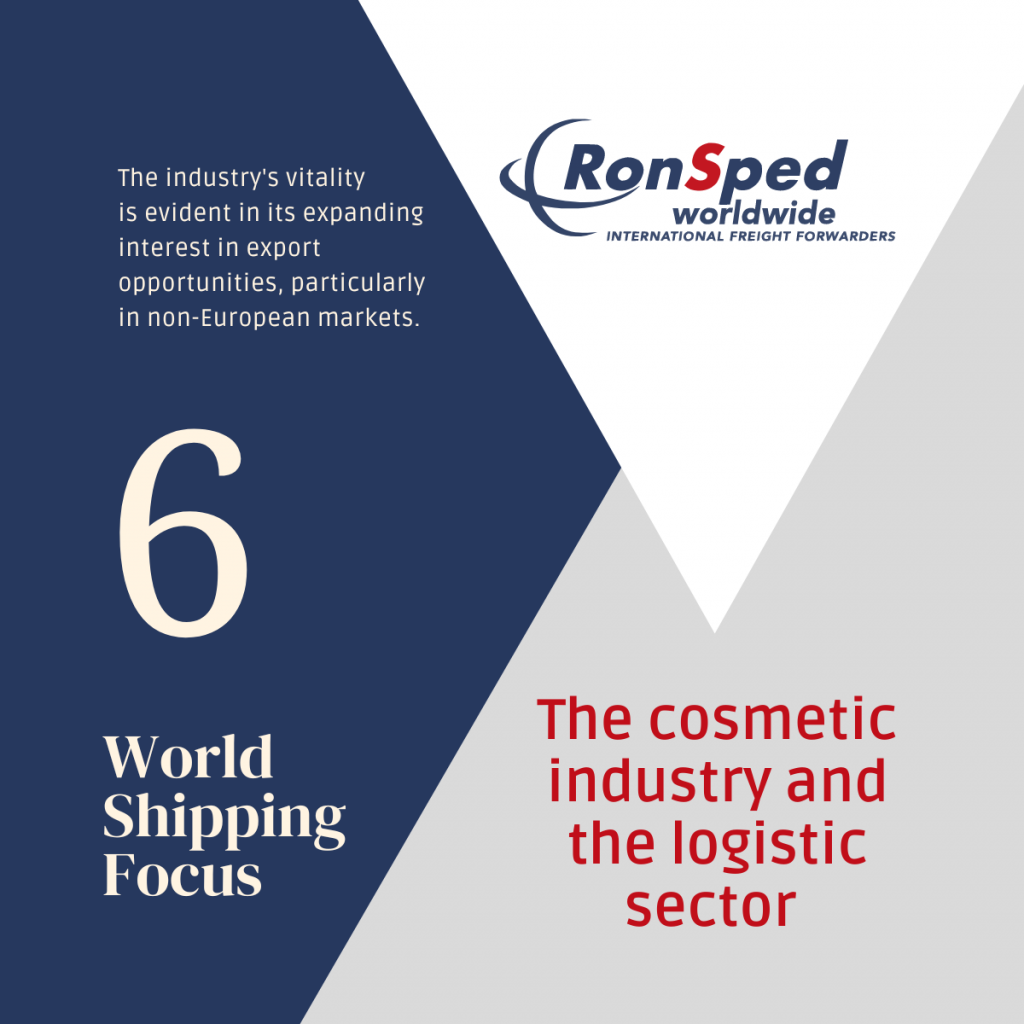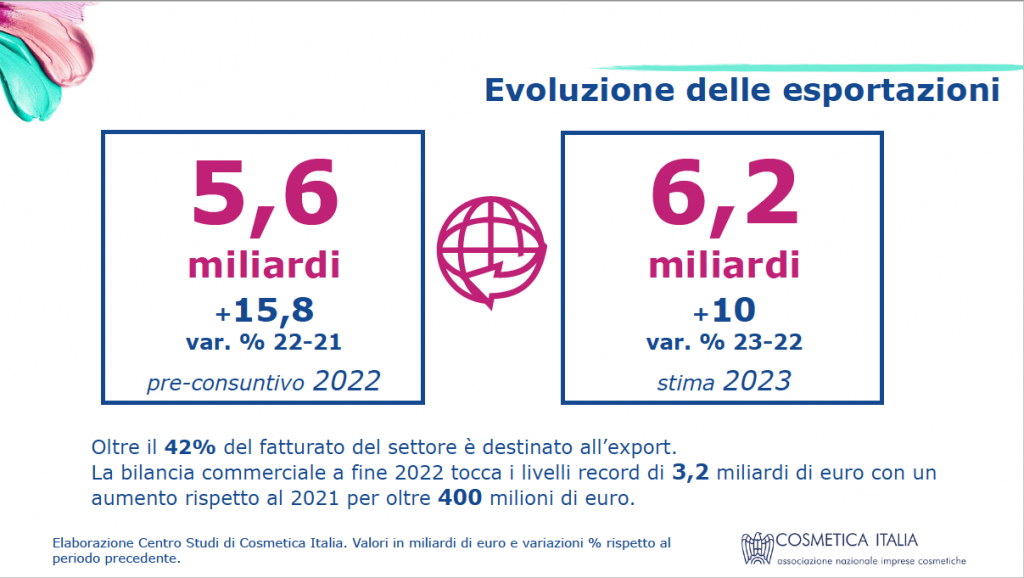
The role of AI in Logistics
8 Maggio 2023
The global ports performance
24 Maggio 2023A study conducted by Althesys reveals that the Cosmetic industry in Italy generated a shared value of 22.3 billion euros in 2021, equivalent to 1.25% of the country’s GDP. This shared value signifies immense benefits for the community. Notably, 90% of the direct impacts are experienced by the state, workers, and other companies within the supply chain. The tax contribution resulting from this industry amounts to 6.7 billion euros, encompassing both the supply chain and related sectors. Approximately 30% of the value created is directed to the state through various taxes and contributions.
The impact on employment is also noteworthy, as each employee in the Cosmetic industry generates an additional 6.3 jobs within the extended supply chain. This demonstrates the sector’s ability to create substantial employment opportunities. Furthermore, companies within the industry allocate 6.4 billion euros to salaries and contributions, providing livelihoods for approximately 155,000 workers involved in the production-to-distribution chain. When considering the professional beauty and hairdressing sectors, the total number of workers rises to 390,000.

The public assembly of Cosmetica Italia
On February 28 was held the public assembly of Cosmetica Italia, the national association of cosmetic companies: a great event to share the success of an entire sector. Prime Minister Giorgia Meloni opened the event stating that “Cosmetics is one of the flagships of Made in Italy. A sector that brings prestige to Italy and generates wealth and jobs”. The sector concluded 2022 with a turnover of 13.2 billion euros, marking a 9% increase compared to 2019, the year prior to the pandemic crisis. This year, the industry is expected to achieve further growth of 7.7%, reaching 14.2 billion euros.
Meloni further emphasized, “Not everyone is aware that Italy possesses the skills, manufacturing capabilities, research, and development that drive this sector. Leading global brands also rely on Italian companies. In fact, 67% of the makeup consumed in Europe and 55% worldwide is produced in Italy. This is why our government is committed to giving equal attention to this sector, just as we do to industries more widely recognized by the general public, such as fashion, agri-food, design, and the automotive sector.”
“The numbers speak to the solid and mature nature of the sector, capable of navigating highly complex and challenging scenarios,” added Benedetto Lavino, President of Cosmetica Italia. “It demonstrates the sector’s ability to create a positive trend, connecting various stakeholders from suppliers to distribution, and significantly impacting internationalization.”
The role of export in the Cosmetic industry
Export has never been more crucial as it is now for the Cosmetic industry: in fact, it represent over 42% of turnover across the sector. In particular, the preliminary data for 2022 shows a figure of € 5.6 Billion (up 15.8% compared to 2021), estimated at €6.2 Billion for 2023 (up 10% compared to 2022). It’s worth noting that the trade balance, which at the end of 2022 reached a record level of €3.2 Billion, is now growing by over €400 Million compared to 2021.
There’s also been positive performance in the domestic market. In fact, cosmetics consumption in Italy will have reached €11.6 Billion in 2022 (up 8.9% compared to 2021) and it is estimated that in 2023 it will reach €12.3 Billion (up 6.3% compared to 2022).

The journey continues
The year 2022 posed significant challenges for Italian companies, as they grappled with long-standing problems and ongoing issues that persist in their daily operations. The Italian cosmetics industry, in particular, continues to face obstacles, with uncertainties surrounding the supply chain and the repercussions of the conflict in Ukraine impacting its recovery. It’s not just the foundries, ceramics, and textiles sectors that are affected; the cosmetics industry is also feeling the strain of soaring fuel costs. According to the Cosmetica Italia, companies in the industry have been burdened with an energy surcharge of over 35%. This substantial increase cuts across the entire supply chain, which amounts to nearly €17 billion, encompassing the cosmetics industry (€11.8 billion), raw materials (€1 billion), machinery (€366 million), and packaging (€3.8 billion). These high bills compound the challenges arising from difficulties in raw material procurement. Specifically, there has been an 18% increase in raw material costs for cosmetics and packaging, along with an 11% increase in costs related to the transformation and production of cosmetics. On the other hand, companies with a focus on commercial distribution are grappling with a nearly 10% rise in logistics expenses. While there has been a progressive decline in raw material prices in recent months, the impact on profit margins remains.
Italian Cosmetic Industry embracing the future: an ethical approach and a rising export
Amidst the pandemic, the cosmetics sector showcased its remarkable resilience, swiftly adapting to market shifts and challenges that emerged. Even today, it continues to exhibit a robust ability for innovation and flexibility in response to any unforeseen circumstances. In the face of adversity, the Italian cosmetics industry demonstrates its unwavering commitment and fair practices by minimizing price escalations.
The industry’s vitality is evident in its expanding interest in export opportunities, particularly in non-European markets.
We believe that there are great opportunity for the logistics Companies in the Italian Cosmetic industry and we are ready to offer our know-how to all the players in this sector.
Sources:
https://www.ilsole24ore.com/art/marche-l-export-dell-industria-e-cresciuto-20percento-2022-AENKZsSD
Report “The Italian Factory 2023” by Estetica hair
Indagine congiunturale: mercato e industria cosmetica – Benedetto Lavino, Presidente Cosmetica Italia
Read the other World Shipping Focus News:
Post 2M. perspectives in container shipping
India as a global hub for logistics and manufacturing
The 2035 ban to endothermic engines in Europe and how it affects Italy’s economy and export



